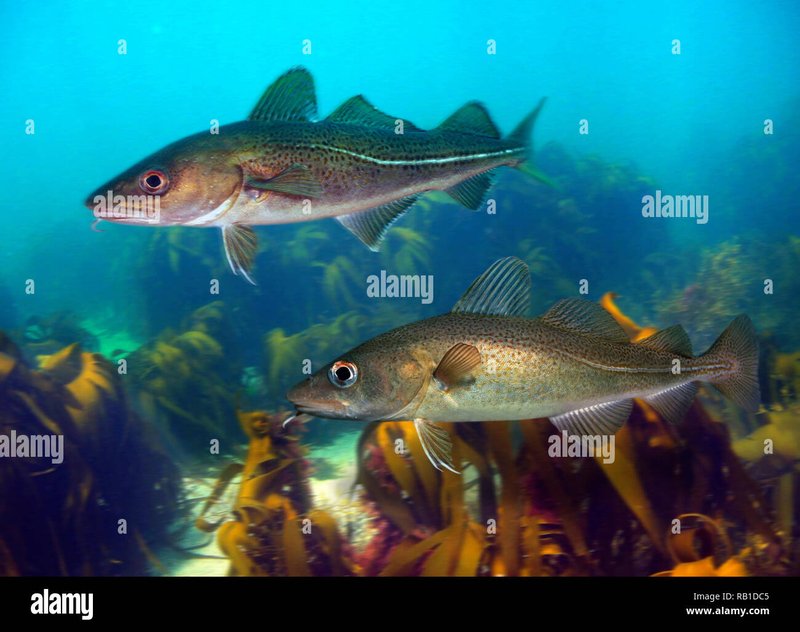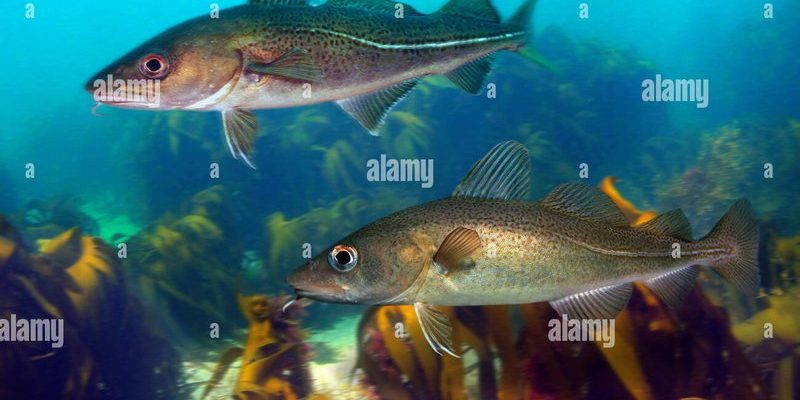
Let’s dive into the waters where cod live and explore what’s putting them at risk. Picture the ocean like a huge, interconnected web where everything affects everything else. When one part of that web gets tugged too hard, it can unravel fast, leaving the cod trapped in a bit of a mess. So, what exactly are these threats? Here’s a closer look.
Overfishing: A Looming Shadow
One of the biggest threats to cod is overfishing. Think of it like taking too many cookies from the cookie jar before they have a chance to bake. When fishing boats catch more cod than can naturally replenish, the fish population starts to dwindle.
Historically, cod fishing has been a massive industry, especially in areas like the North Atlantic. For years, fishing quotas were set without fully considering how quickly cod could reproduce. Cod are relatively slow to mature, taking several years to reach breeding age. So, when the numbers are low, it’s a big deal. If we keep fishing at this rate, we risk emptying the ocean of these iconic fish.
The Consequences of Overfishing
Without a sustainable fishing plan, we can end up with a population that can’t bounce back. This leads to a cycle where fewer fish reproduce, which further decreases the population. When fishermen catch too many cod, they also inadvertently catch other species due to bycatch—fish that are caught unintentionally—and this can disrupt the entire marine ecosystem.
To combat this, many countries have implemented fishing regulations and quotas. But enforcing these rules can be tough. Moreover, illegal fishing operations can slip through the cracks, continuing to put pressure on cod populations.
Climate Change: Warming Waters
Another major threat to cod is climate change. As temperatures rise, ocean waters are becoming warmer, which affects the habitats where cod thrive. Think of cod as Goldilocks—they need their environment to be “just right,” and warm waters can throw a wrench in the works.
When the ocean warms, it can lead to changes in currents and food availability. Cod rely on specific prey, like small fish and crustaceans, that may not survive in higher temperatures. If their food source dwindles, cod have a harder time finding enough to eat, which can lead to a decline in their population.
Acidification: A Silent Hazard
As we burn fossil fuels, more CO2 ends up in the atmosphere and oceans. This increased carbon dioxide leads to ocean acidification, which can harm marine life. Cod, like many fish, rely on the health of their ecosystem to survive. Acidic waters can impact their ability to sense predators, find food, and even reproduce.
If left unchecked, acidification could transform the marine environment, leading to a decline in cod numbers and impacting other fish species that depend on similar habitats.
Habitat Destruction: A Fragile Home
The seafloor is where cod spawn and raise their young, but habitat destruction can threaten these critical areas. Activities like bottom trawling—a fishing method that drags nets across the sea floor—can damage habitats where cod lay eggs. It’s like bulldozing a forest to build a road; the original homes are destroyed, and the inhabitants—cod in this case—struggle to survive.
Coastal development, pollution, and even climate change-related phenomena like rising sea levels can all contribute to habitat loss. When cod lose their breeding grounds, it can lead to long-term population declines.
The Importance of Marine Protected Areas
Creating marine protected areas (MPAs) can help mitigate some of these issues. By allowing certain regions to be off-limits to fishing and development, we give cod and other marine life a chance to thrive. These zones can foster recovery, allowing populations to rebound and ecosystems to flourish.
Pollution: Contaminated Waters
Pollution is another threat that cod face in their natural environments. Chemical runoff from agriculture, plastic waste, and other pollutants can have dire effects on marine life. Contaminants can enter the food chain, ultimately affecting the health of cod and the humans who consume them.
Heavy metals, plastics, and other toxins not only harm individual fish but can also disrupt entire ecosystems. Imagine a once-thriving underwater city now plagued by toxins; it’s not just the cod that suffer but countless species that share their space.
Community Efforts to Reduce Pollution
Communities and organizations are working to combat pollution in the oceans. Clean-up efforts, stricter regulations on waste disposal, and initiatives to reduce plastic use can help. When you support local environmental groups or sustainable fishing practices, you contribute to the broader fight against pollution.
Competition from Invasive Species
Invasive species are like uninvited guests at a party; they disrupt the natural balance. Species like the lionfish or green crabs can outcompete cod for food and resources. These invaders can take over the habitat that cod depend on, making it even harder for them to survive.
When invasive species are introduced—either accidentally or intentionally—they can cause significant changes in local ecosystems. Cod may find themselves struggling against these newcomers, leading to further population declines.
Monitoring and Management of Invasive Species
Efforts are underway to monitor and manage invasive species. By observing their impact and taking steps to control their population, we can help protect native species like cod. Education about the risks of introducing non-native species can also play a crucial role in preserving marine biodiversity.
The threats to cod in the wild are real and serious. From overfishing and climate change to habitat destruction and pollution, these factors are interconnected and often amplify each other. As stewards of the ocean, we all have a role to play in protecting cod and their habitats.
You might wonder what you can do. Supporting sustainable seafood choices, reducing plastic use, and advocating for marine protected areas are just a few ways to help. Cod, like many species, deserve a chance to thrive, and together, we can make a difference. Let’s be mindful of the ocean’s health and ensure future generations can enjoy this remarkable fish.

